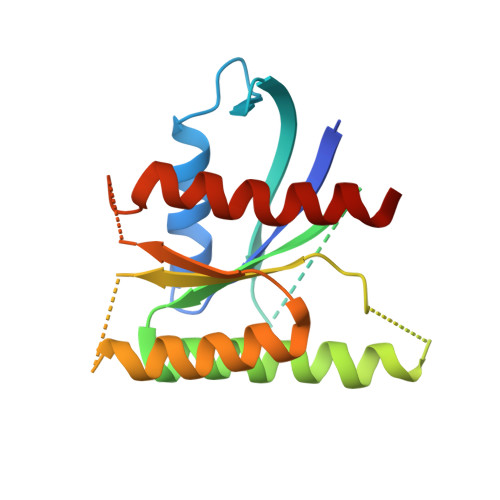p190RhoGAP proteins contain pseudoGTPase domains.
Stiegler, A.L., Boggon, T.J.(2017) Nat Commun 8: 506-506
- PubMed: 28894085
- DOI: https://doi.org/10.1038/s41467-017-00483-x
- Primary Citation of Related Structures:
5U4U, 5U4V - PubMed Abstract:
The two p190RhoGAP proteins, p190RhoGAP-A and -B, are key regulators of Rho GTPase signaling and are essential for actin cytoskeletal structure and contractility. Here we report the discovery of two evolutionarily conserved GTPase-like domains located in the 'middle domain', previously thought to be unstructured. Deletion of these domains reduces RhoGAP activity. Crystal structures, MANT-GTPγS binding, thermal denaturation, biochemical assays and sequence homology analysis all strongly support defects in nucleotide-binding activity. Analysis of p190RhoGAP proteins therefore indicates the presence of two previously unidentified domains which represent an emerging group of pseudoenzymes, the pseudoGTPases.A growing number of 'pseudoenzymes' with a regulatory role in signal transduction processes but without catalytic activity are being identified. Here, the authors identify two pseudoGTPase domains in p190RhoGAP, characterize them biochemically and structurally and show that they influence RhoGAP activity.
Organizational Affiliation:
Department of Pharmacology, Yale University School of Medicine, 333 Cedar Street, New Haven, CT, 06520, USA.














